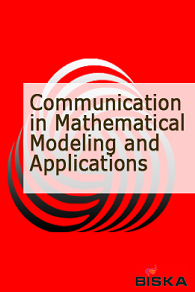A mathematical analysis of a 2D model for tumor angiogenesis: An initial data perturbation approximation
A mathematical analysis of a 2D model for tumor angiogenesis: An initial data perturbation approximation
We present a 2D - mathematical model for tumor angiogenesis and solve it by linearizing it using an initial data perturbation approximation method. This method is a well-known and highly effective method to obtain solutions of coupled non-linear differential equations. This method shows that a few terms of the obtained approximate solution are enough to get an idea about the movement of endothelial, macrophage and pericyte cells in the extra cellular matrix, which are needed for the initiation of tumor angiogenesis. MATLAB-generated figures are provided.
Keywords:
Tumor angiogenesis linearization, perturbation,
___
- [1] Paweletz, N., Knierim, M., Tumor-related angiogenesis, Critical Reviews in Oncology/Hematology, V.9, N.3, 1989, pp.197-242.
- [2] Nicosia, R.F., Bonanno, E., Smith, M., Fibronectin promotes the elongation of micro vessels during angiogenesis in vitro, Journal of Cellular Physiology, V.154, N.3, 1993, pp.654-661.
- [3] Yamada, K.M., Olden, K., Fibronectins-adhesive glycoproteins of cell surface and blood, Nature, V. 275, N. 5677, 1978, pp. 179-184.
- [4] Folkman, J., Tumor angiogenesis: therapeutic implications, New England Journal of Medicine, V.285, N.21, 1971, pp.1182-1186.
- [5] Folkman, J., The vascularization of tumors, Scientific American, V.234, N.5, 1976, pp.58-70.
- [6] Schleef, R. R., Birdwell, C. R., The effect of proteases on endothelial cell migration in vitro, Experimental Cell Research, V.141, N.2, 1982, pp. 505-508.
- [7] Othmer, H. G., Stevens, A., Aggregation, blow up, and collapse: the ABCS of taxis in reinforced random walks, SIAM Journal on Applied Mathematics, V. 57, N. 4, 1997, pp. 1044-1081.
- Başlangıç: 2016
- Yayıncı: Mustafa BAYRAM
